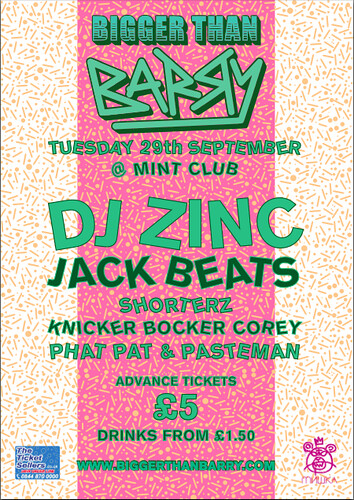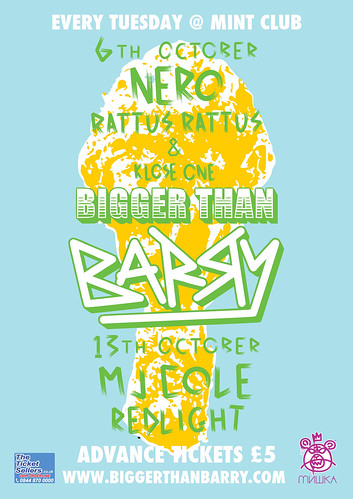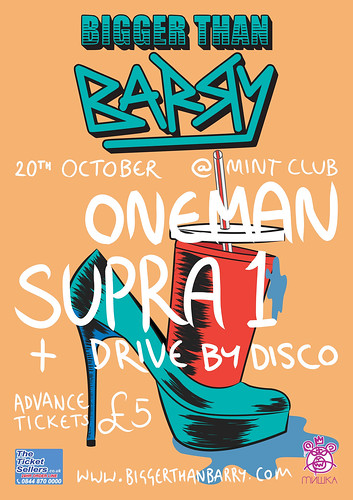http://www.ixd101.com/
Especially this bit
Butcher's paper is your friend
Lay it around your desk as you work. Take notes, draw little diagrams. Draw screen mock-ups. Pin them on the wall. They won't get lost like pages in your notebook if they are visible in your workplace. Additionally, your process and progress will be visible to other teams.
Colour Theory
#1 It Affects your Mood
mood_colour
Most of us have a favourite colour or prefer some colours over others. This is because can affect our moods so we surround ourselves in the colours that have a positive impact on our mood.
Red can boost your energy, yellow often makes people feel happier, and blue is proven to bring down blood pressure and slow your heart rate which is why it is often associated with being relaxing. If you combine the happiness of yellow and the relaxing feel of blue you get green, a very pleasing colour for many people.
Mental health units are known to use pastel tones on their walls so that patients feel calm, happy, and relaxed. Walls that are beige with a pink tint combined with mint green floors are a popular combination as it is said to create a soothing, harmonious and calm area. At the other end of the spectrum, literally, schools tend to user bright colours that appeal to children.
When choosing colours for your next design it is important to consider how they will combine and sit with the other elements on the page and what impact that will have on the mood of your audience.
#2 Colours Communicate Invisibly
Wassily Kandinsky was one of the first pioneers of colour theory. A renowned Russian painter and art theorist, he is often considered the founder of abstract art. Kandinsky believed the following colours communicate the following qualities:
* Yellow – warm, exciting, happy
* Blue – deep, peaceful, supernatural
* Green – peace, stillness, nature
* White – harmony, silence, cleanliness
* Black – grief, dark, unknown
* Red – glowing, confidence, alive
* Orange – radiant, healthy, serious
#3 Colour has Cultural Significance
Different colours mean different things in different places. This is extremely important for designers to know because without an awareness of the cultural significance of a particular colour, you risk offending your entire target audience.
Purple for example is a colour of mourning in Thailand. In western culture however, it is associated with royalty, luxury, wealth and sometimes magic. The brand colour for Thai Airways is purple. On first glance this seems like a huge error on their part because as mentioned above, purple is a colour of mourning in Thailand.
It is most likely however, that the Thai Airways website isn’t aimed at locals but at tourists, therefore if westerners view the site and see purple it will associate Thai Airways with values such as luxury and comfort.
Other examples are:
* In western cultures black is a colour of mourning
* In Japan however it is a colour of honour, with white the colour of mourning
* Red in the west represents danger, love, passion
* In India it is a colour of purity, in China it is a colour of good luck and in South Africa it is a colour of mourning
* Yellow represents courage in Japan, mourning in Egypt and hope in the West
#4 Colour can be Inspired by our Surroundings
brown_nature
We live in a colourful world, a world that acts as the perfect inspirational trigger for design. The best thing about looking to the environment for design solutions is that the palette is always changing, from autumnal oranges to cold winter blues. So where better to look than out of your window, take in the colours and then apply them to your designs.
Drawing inspiration from nature for your designs also makes you look at the world differently. Normally we whiz by from place to place but you notice the finer details and undiscovered gems when you actually stop to take it in.
#5 Colour has Political Associations
colours_politics
Individual political parties are associated with one colour or another. Depending on whom your audience is, this might prove to be valuable information when designing.
The association between political parties and colours isn’t a new connection but it is often taken for granted. In the UK for example the following pairings exist:
* Labour – Red
* Conservative – Blue
* Liberal Democrats – Yellow
* The Green Party – Green
If a colour is representative of a political party then the values and behaviours that the party is known for can be suggested through the use of this colour.
* Red is often linked to socialism and communism
* White has links to pacifism and the surrender flag. In contrast to this, black is a colour that is used in conjunction with anarchism.
* Working class Nazism is associated with the colour brown as the SA were known as the ‘brownshirts’.
A design with one of these colours as the dominant shade may well hint at a right wing or a left wing preference or at extreme behaviours.
#6 Religion can be Linked to Colours
orange_monks
As with politics, colours are representative of certain religions. So as not to unintentionally offend anyone through your designs, some examples of these colour/religion associations are:
* Green is considered to be the holy colour of Islam
* Judaism is represented by the colour yellow
* In Hinduism, many gods have blue skin
* White is linked to peace across many religions
Again this may only be necessary information if you are designing a site that has specific links to religion but it also emphasises that a thorough knowledge of your audience is a fundamental part of the design process.
#7 Age Affects People’s Colour Preferences
Colour expert Faber Birren carried out many studies into this area and in his book Color Psychology and ColorTherapy, he states that for both genders, blue and red “maintain a high preference throughout life”. He found that yellow is popular with children but as become move into adulthood it shows less popularity. Birren found that “with maturity comes a greater liking for hues of shorter wave length (blue, green, purple) than for hues of longer wave length (red, orange, and yellow)”
Another factor that influences people’s colour preferences is that throughout their life there will be social and cultural changes and this can directly impact on their favourite colours. Some knowledge of what colours certain age ranges prefer can be valuable for designers. If you were designing a website for a toy store or a children’s TV channel, then knowing they prefer bright colours and yellow in particular would help with your design decisions.
Likewise, if you designed a website for a charity whereby the audience was to be the older generation then blue, green or purple might be ideal, based on Birren’s findings.
http://carsonified.com/blog/design/color/how-colour-communicates-meaning/
mood_colour
Most of us have a favourite colour or prefer some colours over others. This is because can affect our moods so we surround ourselves in the colours that have a positive impact on our mood.
Red can boost your energy, yellow often makes people feel happier, and blue is proven to bring down blood pressure and slow your heart rate which is why it is often associated with being relaxing. If you combine the happiness of yellow and the relaxing feel of blue you get green, a very pleasing colour for many people.
Mental health units are known to use pastel tones on their walls so that patients feel calm, happy, and relaxed. Walls that are beige with a pink tint combined with mint green floors are a popular combination as it is said to create a soothing, harmonious and calm area. At the other end of the spectrum, literally, schools tend to user bright colours that appeal to children.
When choosing colours for your next design it is important to consider how they will combine and sit with the other elements on the page and what impact that will have on the mood of your audience.
#2 Colours Communicate Invisibly
Wassily Kandinsky was one of the first pioneers of colour theory. A renowned Russian painter and art theorist, he is often considered the founder of abstract art. Kandinsky believed the following colours communicate the following qualities:
* Yellow – warm, exciting, happy
* Blue – deep, peaceful, supernatural
* Green – peace, stillness, nature
* White – harmony, silence, cleanliness
* Black – grief, dark, unknown
* Red – glowing, confidence, alive
* Orange – radiant, healthy, serious
#3 Colour has Cultural Significance
Different colours mean different things in different places. This is extremely important for designers to know because without an awareness of the cultural significance of a particular colour, you risk offending your entire target audience.
Purple for example is a colour of mourning in Thailand. In western culture however, it is associated with royalty, luxury, wealth and sometimes magic. The brand colour for Thai Airways is purple. On first glance this seems like a huge error on their part because as mentioned above, purple is a colour of mourning in Thailand.
It is most likely however, that the Thai Airways website isn’t aimed at locals but at tourists, therefore if westerners view the site and see purple it will associate Thai Airways with values such as luxury and comfort.
Other examples are:
* In western cultures black is a colour of mourning
* In Japan however it is a colour of honour, with white the colour of mourning
* Red in the west represents danger, love, passion
* In India it is a colour of purity, in China it is a colour of good luck and in South Africa it is a colour of mourning
* Yellow represents courage in Japan, mourning in Egypt and hope in the West
#4 Colour can be Inspired by our Surroundings
brown_nature
We live in a colourful world, a world that acts as the perfect inspirational trigger for design. The best thing about looking to the environment for design solutions is that the palette is always changing, from autumnal oranges to cold winter blues. So where better to look than out of your window, take in the colours and then apply them to your designs.
Drawing inspiration from nature for your designs also makes you look at the world differently. Normally we whiz by from place to place but you notice the finer details and undiscovered gems when you actually stop to take it in.
#5 Colour has Political Associations
colours_politics
Individual political parties are associated with one colour or another. Depending on whom your audience is, this might prove to be valuable information when designing.
The association between political parties and colours isn’t a new connection but it is often taken for granted. In the UK for example the following pairings exist:
* Labour – Red
* Conservative – Blue
* Liberal Democrats – Yellow
* The Green Party – Green
If a colour is representative of a political party then the values and behaviours that the party is known for can be suggested through the use of this colour.
* Red is often linked to socialism and communism
* White has links to pacifism and the surrender flag. In contrast to this, black is a colour that is used in conjunction with anarchism.
* Working class Nazism is associated with the colour brown as the SA were known as the ‘brownshirts’.
A design with one of these colours as the dominant shade may well hint at a right wing or a left wing preference or at extreme behaviours.
#6 Religion can be Linked to Colours
orange_monks
As with politics, colours are representative of certain religions. So as not to unintentionally offend anyone through your designs, some examples of these colour/religion associations are:
* Green is considered to be the holy colour of Islam
* Judaism is represented by the colour yellow
* In Hinduism, many gods have blue skin
* White is linked to peace across many religions
Again this may only be necessary information if you are designing a site that has specific links to religion but it also emphasises that a thorough knowledge of your audience is a fundamental part of the design process.
#7 Age Affects People’s Colour Preferences
Colour expert Faber Birren carried out many studies into this area and in his book Color Psychology and ColorTherapy, he states that for both genders, blue and red “maintain a high preference throughout life”. He found that yellow is popular with children but as become move into adulthood it shows less popularity. Birren found that “with maturity comes a greater liking for hues of shorter wave length (blue, green, purple) than for hues of longer wave length (red, orange, and yellow)”
Another factor that influences people’s colour preferences is that throughout their life there will be social and cultural changes and this can directly impact on their favourite colours. Some knowledge of what colours certain age ranges prefer can be valuable for designers. If you were designing a website for a toy store or a children’s TV channel, then knowing they prefer bright colours and yellow in particular would help with your design decisions.
Likewise, if you designed a website for a charity whereby the audience was to be the older generation then blue, green or purple might be ideal, based on Birren’s findings.
http://carsonified.com/blog/design/color/how-colour-communicates-meaning/
Some good advice
Don’t Make The Switch
Most freelancers start freelancing part-time and stick with it while holding a full-time job. The key reason for this is to make sure there is a regular income you can count on. However, many freelancers get so excited about “being their own boss” and “choosing their own hours” that they end up making the switch without adequately planning their finances. The first and foremost thing that you shouldn’t do while starting out as a freelancer is quit your day job prematurely. This is one of the most repeated points and the reason is simple: you need to make sure your freelance business can support you before you quit your job. If you are new to freelancing and just starting out, hold on to your day job for months, and in some cases years. Do not quit your day job unless you are 100% sure you can earn a living solely on your freelance income. If you find it difficult to manage, take a look at this article for a few tips for freelancing with a full-time job.
Don’t Give Into Temptation
When you start freelancing you’ll see that there are a lot of temptations to deal with. You might want to setup your home office with new computers and furniture just to make it look cool. Heck, you might be doing it just to get yourself seen on Gizmodo. Whether it’s the new gadgets, thousand dollar ergonomic chair or another monitor, make sure there is a legitimate need before diving into these expenses. Keep those temptations in check, it’s better to hold on to that money just in case your freelancing income takes a nose dive next month. That’s the thing about freelancing, sometimes you never know. Hold on to temptations and spend only on things that are a must for you to run your freelance business. Do not give in.
Don’t Be Too Friendly or Personal
This is another one of those things that many new freelancers get sucked into. A new freelancer usually gets excited when landing their first client and may feel that he/she needs to be extra friendly. Friendly is good, but over friendly isn’t. Many new freelancers get a little too comfortable with their clients and may share personal problems among other things. The client might stay while the contract lasts, but a lack of professionalism may eventually drive them away. As a freelancer, you should be friendly but a relationship is always better as a client and freelancer. Do not wreck the client-freelancer relationship by being too personal.
Don’t Forget To Create a Plan
Just because you will be working from home, setting your own hours, and without anyone to answer to doesn’t mean you don’t need a plan for your business. Many freelancers start out great during their early years as freelancers and then fail later on because they didn’t create a plan. Make sure you have a detailed plan that will give you an idea of how you will grow your freelancing business down the road, how you plan to land new clients, and so on. This is one of those critical things that your freelancing business will depend on. Do not forget to create a plan for your freelancing business. Just like any other businesses, a plan for freelancing is a must.
Do Not Procrastinate
Procrastination is a freelancer’s biggest enemy and should be avoided at any cost. As a freelancer you have the luxury of choosing when and where to work, and although this is one of the best outcomes of freelancing, it can also be one of the biggest challenges. Make sure you stay clear from procrastination. I have personally seen many freelancers lose out on some of the biggest gigs simply because they procrastinated and the job was either not completed on time or was not up to what was promised. Do not procrastinate, and make sure to get ahead in the game by doing things when they needs to be done.
http://freelancefolder.com/what-not-to-do-when-starting-out-as-a-freelancer/
Most freelancers start freelancing part-time and stick with it while holding a full-time job. The key reason for this is to make sure there is a regular income you can count on. However, many freelancers get so excited about “being their own boss” and “choosing their own hours” that they end up making the switch without adequately planning their finances. The first and foremost thing that you shouldn’t do while starting out as a freelancer is quit your day job prematurely. This is one of the most repeated points and the reason is simple: you need to make sure your freelance business can support you before you quit your job. If you are new to freelancing and just starting out, hold on to your day job for months, and in some cases years. Do not quit your day job unless you are 100% sure you can earn a living solely on your freelance income. If you find it difficult to manage, take a look at this article for a few tips for freelancing with a full-time job.
Don’t Give Into Temptation
When you start freelancing you’ll see that there are a lot of temptations to deal with. You might want to setup your home office with new computers and furniture just to make it look cool. Heck, you might be doing it just to get yourself seen on Gizmodo. Whether it’s the new gadgets, thousand dollar ergonomic chair or another monitor, make sure there is a legitimate need before diving into these expenses. Keep those temptations in check, it’s better to hold on to that money just in case your freelancing income takes a nose dive next month. That’s the thing about freelancing, sometimes you never know. Hold on to temptations and spend only on things that are a must for you to run your freelance business. Do not give in.
Don’t Be Too Friendly or Personal
This is another one of those things that many new freelancers get sucked into. A new freelancer usually gets excited when landing their first client and may feel that he/she needs to be extra friendly. Friendly is good, but over friendly isn’t. Many new freelancers get a little too comfortable with their clients and may share personal problems among other things. The client might stay while the contract lasts, but a lack of professionalism may eventually drive them away. As a freelancer, you should be friendly but a relationship is always better as a client and freelancer. Do not wreck the client-freelancer relationship by being too personal.
Don’t Forget To Create a Plan
Just because you will be working from home, setting your own hours, and without anyone to answer to doesn’t mean you don’t need a plan for your business. Many freelancers start out great during their early years as freelancers and then fail later on because they didn’t create a plan. Make sure you have a detailed plan that will give you an idea of how you will grow your freelancing business down the road, how you plan to land new clients, and so on. This is one of those critical things that your freelancing business will depend on. Do not forget to create a plan for your freelancing business. Just like any other businesses, a plan for freelancing is a must.
Do Not Procrastinate
Procrastination is a freelancer’s biggest enemy and should be avoided at any cost. As a freelancer you have the luxury of choosing when and where to work, and although this is one of the best outcomes of freelancing, it can also be one of the biggest challenges. Make sure you stay clear from procrastination. I have personally seen many freelancers lose out on some of the biggest gigs simply because they procrastinated and the job was either not completed on time or was not up to what was promised. Do not procrastinate, and make sure to get ahead in the game by doing things when they needs to be done.
http://freelancefolder.com/what-not-to-do-when-starting-out-as-a-freelancer/
Subscribe to:
Posts (Atom)








